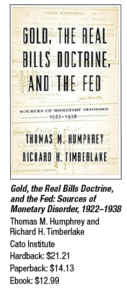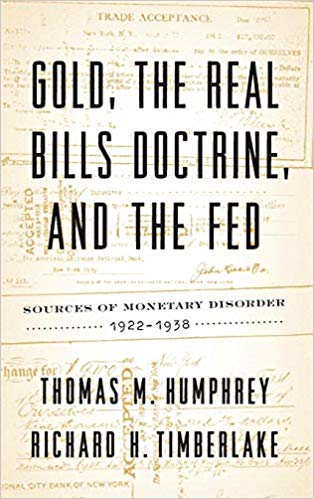 The gold standard is often blamed for causing “the Great Contraction”—the unprecedented collapse of the U.S. money stock that began after the 1929 stock market crash and led to the Great Depression.
The gold standard is often blamed for causing “the Great Contraction”—the unprecedented collapse of the U.S. money stock that began after the 1929 stock market crash and led to the Great Depression.
In Gold, the Real Bills Doctrine, and the Fed, Richmond Federal Reserve board member Thomas M. Humphrey and Richard H. Timberlake, emeritus professor of economics at Terry College, thoroughly refute that claim. Instead, they identify the culprit as a now relatively unknown, but once highly influential, theory: the Real Bills Doctrine.
The Fed’s failure to stem the Great Contraction was due, not to any shortage of gold, but to Fed officials’ devotion to a doctrine that made them unwilling to make full use of the U.S’s ample gold reserves.
According to the publisher, it is the only book in the economic literature devoted to the Real Bills Doctrine and its logic, history, strengths, weaknesses and role in policy debates.


